Interview with Todd Alexander
For the first time in years, the roller door is up and a lamp burns brightly casting shadows across an old sofa and the dog-eared biography of Katharine Hepburn. The garage still smells of Pa—of sweat, engine oil and stale booze—though the old man hasn’t been here in a while. This is Tom’s place. A place of memories and secrets and startling discoveries. I’m here to welcome Australian author and creator of the wonderful Tom Houghton, a novel that deserves to become a classic. Join me in welcoming Todd Alexander.
RH: Todd Alexander, welcome to your very own Tom-Houghton-inspired piece of Writers Block. I probably should have taken us to the pub where Tom’s mum worked, but the old fibro garage was so central to Tom’s younger self that I couldn’t resist meeting you here. I did bring refreshments though. Red or white or something non-alcoholic?
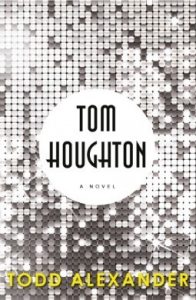 TA: I’m more comfortable in the garage. Though Tom Houghton is a work of fiction, the garage is a real place, at the back of my late grandfather’s house in Seven Hills. (It’s since been demolished). There the non-fiction ends, however. I don’t think we’d get peace and quiet where Lana works and we’d probably be ducking a few thrown glasses! Thanks for the offer of a drink – at Pa’s garage it was usually beer but today I’ll have a glass of white. I should offer you one of my Aunty Hazel’s cheese and bacon rolls while we’re here!
TA: I’m more comfortable in the garage. Though Tom Houghton is a work of fiction, the garage is a real place, at the back of my late grandfather’s house in Seven Hills. (It’s since been demolished). There the non-fiction ends, however. I don’t think we’d get peace and quiet where Lana works and we’d probably be ducking a few thrown glasses! Thanks for the offer of a drink – at Pa’s garage it was usually beer but today I’ll have a glass of white. I should offer you one of my Aunty Hazel’s cheese and bacon rolls while we’re here!
RH: Mmm, bacon! Yes, please. And I could rustle you up a beer because Writers’ Block has that kind of magic. *wink*
About the Book
His whole life has been a fantasy.
Who is Tom Houghton?
As a boy growing up in the western suburbs of Sydney, Tom Houghton escapes the harshness of the schoolyard by cocooning himself in the cinema of the golden age of Hollywood.
When he discovers that his favourite actress, Katharine Hepburn, modelled herself on her brother, Thomas Houghton Hepburn, Tom sinks deeper into his fantasy life. Determined to reveal his true identity to the world, Tom is propelled on a torturous path with disastrous consequences.
Almost thirty years later, Tom is offered an acting role at a festival in Scotland. With the rigours of his past finally catching up with him, fantasy and reality struggle for control and Tom finds himself questioning everything he thought he knew about himself.
Returning to Fiction Writing
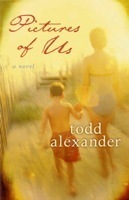 RH: Thanks to Simon and Schuster Australia, I was privileged to receive an advance review copy of Tom Houghton and though it should have gone to the bottom of my ever-increasing To-Be-Read pile, I was hooked from the first page and couldn’t set it aside. I’m not the only one. Reviews are very positive citing Tom Houghton as “A cleverly crafted novel with wonderfully flawed characters”, “intriguing and well written”, and it’s acclaimed as “…incredibly raw and sad to read at times, but equally compelling”. Your first novel, Pictures of Us, was published in 2006, and after a series of successful non-fiction books Tom Houghton marks your return to fiction. Tell us a little about Tom Houghton the novel, and how it feels to be back in the realm of fiction writing.
RH: Thanks to Simon and Schuster Australia, I was privileged to receive an advance review copy of Tom Houghton and though it should have gone to the bottom of my ever-increasing To-Be-Read pile, I was hooked from the first page and couldn’t set it aside. I’m not the only one. Reviews are very positive citing Tom Houghton as “A cleverly crafted novel with wonderfully flawed characters”, “intriguing and well written”, and it’s acclaimed as “…incredibly raw and sad to read at times, but equally compelling”. Your first novel, Pictures of Us, was published in 2006, and after a series of successful non-fiction books Tom Houghton marks your return to fiction. Tell us a little about Tom Houghton the novel, and how it feels to be back in the realm of fiction writing.
TA: I love writing fiction. I can’t remember not writing it, way back to childhood. The idea for Tom Houghton came to me just after Pictures of Us was published and in its embryonic form the idea was: what if a boy thought he was the reincarnation of Katharine Hepburn’s brother? From that little germ of an idea the character of Seven Hills Tom evolved and I avoided a straight reincarnation fantasy because it didn’t suit who Tom was to become.
In essence Tom Houghton is a story of acceptance and rejection. It’s a boy’s story, as he attempts to escape the torments of his daily life by cocooning himself in the fantasy of the Golden Age of Hollywood. Of course, his actions only cement his position as social pariah at school.
But it’s not just a story about bullying and how a kid with a fantastic imagination tries to survive it. It’s also the story of the adult Tom and how, without it being a preoccupation in his life, his childhood sculpted who he is as a man.
Crafting Dual Narratives
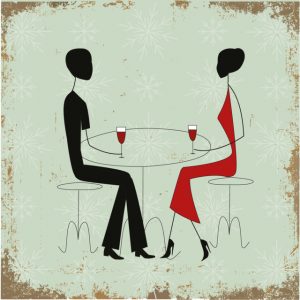 RH: Adult Tom is just as fascinating. We meet him as he’s turning 40, when he’s become a complex mix of insecurity, rudeness, lust and wit. In that opening scene I loved the interplay between him and his friend Hanna, one of the few people in adult Tom’s life who doesn’t let him get away with anything. She tells him “One day you’re going to have to tell me what made you such a monumental fuck up” and in chapter two we begin to find out when you introduce Tom as a twelve year old. Both incarnations of Tom are complex and subtle. You’ve created quite distinct voices for each yet we’re still able to see the links between the boy and the man he becomes. Share with us a little about developing Tom’s character at both ages. For example, did you have to develop each character then write their narrative separately or was it a more organic development of character and story, each emerging from the other as you wrote?
RH: Adult Tom is just as fascinating. We meet him as he’s turning 40, when he’s become a complex mix of insecurity, rudeness, lust and wit. In that opening scene I loved the interplay between him and his friend Hanna, one of the few people in adult Tom’s life who doesn’t let him get away with anything. She tells him “One day you’re going to have to tell me what made you such a monumental fuck up” and in chapter two we begin to find out when you introduce Tom as a twelve year old. Both incarnations of Tom are complex and subtle. You’ve created quite distinct voices for each yet we’re still able to see the links between the boy and the man he becomes. Share with us a little about developing Tom’s character at both ages. For example, did you have to develop each character then write their narrative separately or was it a more organic development of character and story, each emerging from the other as you wrote?
TA: The very first draft of Tom Houghton was only childhood Tom’s story. Further, it was told in the third person. It didn’t work well enough like that, though I knew the character could work. I knew also as a reader that we needed to see what happens to Tom post-childhood. A wonderful publisher and friend (Jon Appleton) encouraged me to explore that idea. But the manuscript sat in a drawer for an awfully long time because, as you’ve referred, I was writing a lot of how-to guides and had a busy and stressful corporate career.
It wasn’t until I went part-time, then moved to the Hunter Valley, that Tom started nagging me to come out of that drawer. When he did, I knew that the adult Tom’s perspective was essential to making it a more compelling read and while re-drafting the childhood scenes and placing them in the first person narrative, I overlaid Tom’s adult scenes. They were actually, therefore, written some years apart and I think the voice is singular but it’s almost as if Tom the twelve year old wrote his scenes, and Tom the adult wrote his. Time and perspective were critical in being able to achieve this.
Bullying
RH: Older Tom has become difficult rather than interesting and though he knows this he can’t seem to stop himself. There is a core of self-loathing that is hinted at in the younger Tom pinching his roles of fat until he bruises, though twelve-year old Tom is in many ways far more accepting of himself. He’s intelligent, witty and, to the other kids, weird. You give a beautiful portrayal of Tom’s reaction to school yard bullying: he is brought to tears but keeps it to himself and takes a rather prosaic attitude toward his rough treatment. Then events converge to put Tom’s need to be accepted on a collision course with these bullies. The image you create of him running through the streets in his ‘Hollywood’ costume, oblivious to how others may react, is both vivid and heartbreaking! Was it inevitable that the character of Tom would be bullied or was this a theme you particularly wanted to include in this novel? If you could, what advice would you give twelve year-old Tom?
TA: Tom is smart and passionate. He is most comfortable in the world created by his mother and grandmother and he can’t quite find his place among his peers. When I was a kid it wasn’t called bullying, one was merely ‘picked on’ and told to develop a thicker skin.
Tom’s status as outcast is precisely what drives him to strive for greatness. I think if he was mediocre he’d just have floated through life like a lot of his peers. So yes, I think it’s almost impossible for a character like Tom not to be targeted for his differentness. I saw a lot of kids get mercilessly bullied at school and I have often wondered what became of them. Writing the prickly adult Tom was a way of exploring that and it helped me further explore the bullying scenes of his childhood.
My advice to young Tom would be to keep dreaming of a better life. Though the hatefulness of his childhood feels absolute, he is better than those who bully him and in time he will find true happiness within reality. Adult Tom is petrified of rejection (a symptom of the outcome of all of his relationships from childhood) and rather than being confident that others will accept him for his true self, he pushes them away before they can get too close. It’s a classic defence mechanism and he too needs a little bit of TLC from someone who’s been there, done that.
RH: Ah, that ‘thicker skin’. As writers it’s a term we hear a lot! And I love that you’ve shown what shaped Tom, how those unseen scars formed his character. So let’s talk a little about young Tom.
Character or Story: Which Came First
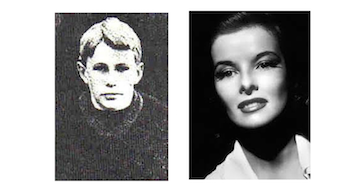 RH: At twelve, Tom’s fascinated by movie stars and will quote movie lines as a form of wit (something other kids, and some adults, find bizarre). When he learns of a family connection to Katharine Hepburn and of the fate of her brother, his namesake, it’s the catalyst for the choices that shape the man he becomes. There is a complexity beneath the apparent simplicity of this story that I imagine could have become quite difficult to wrangle into shape. In terms of creating the plot, I’m interested in which came first: discovering the story of Katharine Hepburn’s brother and then creating a character who could work with that, or did Tom already exist when you discovered the Hepburn connection? What difficulties, if any, did you face when creating Tom Houghton?
RH: At twelve, Tom’s fascinated by movie stars and will quote movie lines as a form of wit (something other kids, and some adults, find bizarre). When he learns of a family connection to Katharine Hepburn and of the fate of her brother, his namesake, it’s the catalyst for the choices that shape the man he becomes. There is a complexity beneath the apparent simplicity of this story that I imagine could have become quite difficult to wrangle into shape. In terms of creating the plot, I’m interested in which came first: discovering the story of Katharine Hepburn’s brother and then creating a character who could work with that, or did Tom already exist when you discovered the Hepburn connection? What difficulties, if any, did you face when creating Tom Houghton?
TA: My knowledge of Hepburn’s brother (Thomas Houghton Hepburn) definitely came first. It’s such a heartbreaking event – the lead up, the suicide, the aftermath and then all the unanswered questions… eclipsed by Katharine Hepburn’s embodiment of him. I found the entire situation fascinating. But I never intended to write that story, Thomas’s or Kate’s.
I struggled, frankly, with how to weave the Hepburn tale into a modern one like Tom’s. I tried various approaches – documentary type accounts of the events, introducing a third Tom character (Thomas), looking at things from Katharine’s perspective… but none of these quite worked. A lot was left on the cutting room floor, as it were, as it became less important to cover all of the 1921 events. At its heart, Tom had to revere Hepburn but I also explored hatred. In the end, I think the balance between knowledge, imagination, recreation and admiration was the only way I could have pulled it off. I hope I have.
What’s Left Unspoken
RH: Well, I certainly think you’ve achieved that. In fact, I’m quite envious of your ability to decide on what your characters leave unspoken. There are hints about the lives of Pa and Lana and much is left unexplained, particularly as you stay true to twelve year old Tom’s point of view and he can only tell us what he understands. As an adult, Tom explains some of this, but you allow the reader to decide what may have happened within the family that is never revealed. There is the suggestion of generational alcoholism, of grief and of secrets, particularly around Lana’s past. How do you decide what must be explicit and what can be implied? Does it take you many re-writes or edits to get the balance right or is it more of an instinctive skill? Share with us a little about how you’ve developed your writing craft.
TA: Oh yes, this is one of the greatest challenges a writer faces! I had to keep focused on the fact that this was a depiction of the world as Tom saw it. What he knows of the other characters is just that. Whether I’m writing about it or not, I am fascinated by the veneer of humanity. As a person I’m always listening beyond it – seeking snippets of detail from friends, family and acquaintances to help me better understand those people and my relationships with them. I suppose I transfer that to the creation of my characters.
In writing fiction, characters always come first for me. I inhabit their skin in a strange but addictive kind of way – I know what they look like, sound like, move like – I know so much about them but without being too cryptic, I certainly don’t know everything about them. So I try to present to the reader enough information to make the character interesting, to hint at so much more than what’s written on the page. Edits help with this – if anything I start with the barest details then add more colour as I go along, always mindful that every snippet needs to have a purpose to the plot. I like to think that any one of my characters could have a book written about them so that’s a bit of a guiding principle for me – keep the reader actively filling in some of the blanks.
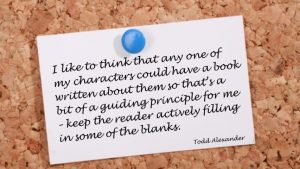 The Fast Five
The Fast Five
RH: That’s a good perspective. I shall have to pin that to my wall as a reminder. Thanks so much for sharing your wisdom with us today, Todd. I hope you’re not exhausted by my nosey questions, because I’m not going to let you go just yet. It’s time for your…
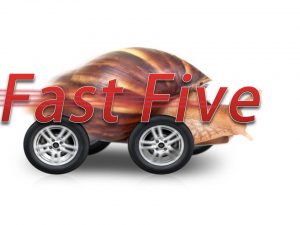 RH: What is your all-time favourite book and/or movie?
RH: What is your all-time favourite book and/or movie?
TA: I wish it was easy to just have one spring to mind! To be honest they change as frequently as the weather. The movie I have seen the most, and still enjoy every single time like it’s the first, is Heartburn starring Meryl Streep and Jack Nicholson and written by Nora Ephron. It wasn’t a big hit but it has a poignancy I just love. Carly Simon’s “Coming Around Again” is the quintessential example of a song that is perfect for a film.
The book that arguably impacted me the most was Keri Hulme’s The Bone People. It is so quiet and powerful. Margaret Atwood’s Cat’s Eye is a brilliant take on childhood and bullying which I admit I have not read since long before I wrote Tom Houghton but I find myself desperate to go back to it.
RH: What are you reading now?
TA: Jonathan Franzen’s Purity.
RH: What is your favourite word?
TA: Squirrel.
RH: What is your worst writing habit?
TA: Being in a rush to get my work into the world.
RH: What is the best bit of advice you ever got (about writing or life in general)?
TA: About writing: leave it in a drawer for at least three months. In life, my dear old dad has a saying: what’s meant for you won’t go past you… and rather than inciting lethargy, instead it diminishes a lot of angst.
RH: Oh, I like that *that’s also going on my wall* Before I let you go, I’m dying to know if you’re working on another novel, planning to continue your non-fiction series of business books or taking a well-deserved breather before diving back into writing. What’s next for Todd Alexander?
TA: All those non-fiction guides were written while I was full-time employed in the world of ecommerce. I’m more or less free of that now so fiction is 100% my focus. I’ve just started working on the next novel and I’ve also started researching another. But I never share details until the manuscript is complete!
RH: Damn, I was hoping for an exclusive *laughs* But I wouldn’t want to jinx you and I certainly look forward to reading it when it’s available. Thanks for joining us today, Todd.
TA: Thank you so much Rowena. Another cheese and bacon before you go?
RH: Nom-nom!
If you’d like a sneak peek at the kind of treeless suburb in which Tom Houghton grew up click here
Buy the Book
Published October 1st 2015 by Simon & Schuster AU
ISBN13: 9781925184556
List Price
AU$ 32.99
NZ$ 34.9
About the Author
Todd has 6 years’ experience as a bookseller and head office buyer and spent 12 years working at eBay, one of Australia’s most recognised brands. He lives in the Hunter Valley of NSW with his partner (cat, pigs, chooks and ducks) where they run a boutique vineyard and accommodation business, Block Eight. Todd has travelled to Africa, Europe, Asia and North America. A graduate of Macquarie University, he has degrees in Modern Literature and Law.
Read more about Todd Alexander
Connect with Todd Alexander
Official Website | Facebook | Twitter
Stay in touch: Join the Community
Stay up-to-date with all the interview, novel and review news (and occasional freebies!) by joining my monthly newsletter. Register your details–it’s free and you can remove yourself at anytime.
* indicates required
Another excellent RH interview. I am certain if I am
fortunate to meet Todd one day I will likely call him Tom! I do like his dad’s saying. Going on my virtual wall too. 🙂
Thanks Jenn 🙂 Yes, it’s a great saying. I had to be careful not to call him Tom too, and when I tell people about the book I always have to reiterate Tom Houghton is the name of the book not the author. Hope to chat to you again soon–virtually and in person.